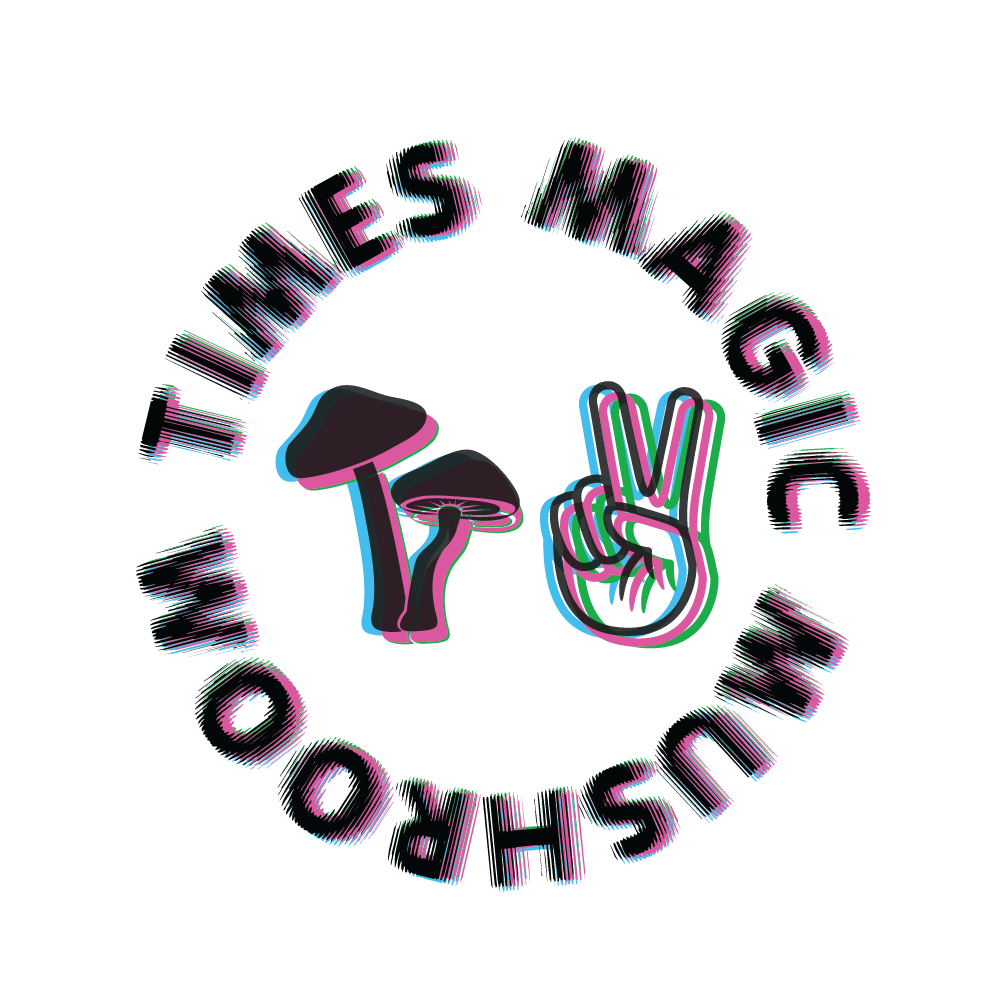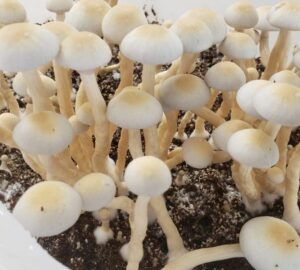It’s easy to see why most folks think of mushrooms as some type of weird plant, popping out from under the soil when it rains and found in the vegetable aisle of the grocery store. If you’re one of these people, you’d be forgiven for such a taxonomical mix-up—even scientists classified fungi as plants until as late as 1969. However, anyone with a bit of mycology knowledge will tell you that fungi are an entire kingdom of life unto themselves, having more in common genetically with animals than with plants.
Magic mushrooms, in particular, are well known for their ability to affect our perception and mental states and have been used for thousands of years in various cultural and religious contexts. In contemporary psychedelic writing, people often talk about mushrooms communicating with them—such as in writer Bett Williams’ account in her book The Wild Kindness:
Need Access to Shrooms?
Secure your supply with DoubleBlind!
“The mushrooms speak to me, but I don’t hear the words like you’d hear from another person talking. It’s as if language arises in my own body, though it’s nothing I’d come up with on my own. Sometimes I’m aware of fully formed sentences. Other times, whole systems of knowledge present themselves, devoid of any coherent words at all.”
Though some of us are eager to start a conversation with mushrooms, it’s never been clear to scientists how mycelium communicates with itself. Sending information across the mycelial network is thought to be important in coordinating growth towards more favorable environments, or deciding when to send out mushrooms. This rapid information transfer can be especially important in far-reaching mycelial colonies—which can cover thousands of acres of land in the case of the honey fungus (Armillaria ostoyae), discovered in Oregon’s Blue Mountains in 1998.
Henry Munn was a writer, translator, and self-styled anthropologist who studied the cultural use of psilocybin-containing mushrooms in Huautla de Jiménez, Mexico—the Oaxacan hometown of famous curandera Maria Sabina—during the late 1960s. In a 1973 essay entitled “The Mushrooms of Language,” Munn wrote:
“The Mazatecs say that the mushrooms speak. If you ask a shaman where his imagery comes from, he is likely to reply: I didn’t say it, the mushrooms did. No mushroom speaks, that is a primitive anthropomorphization of the natural, only man speaks, but he who eats these mushrooms, if he is a man of language, becomes endowed with an inspired capacity to speak.”
READ: What Made María Sabina Unique
Honey Fungus (Armillaria mellea) Wikimedia Commons
However, new research in the last few years may support the view of the Mazatec shamans, and cast Munn’s anthropomorphic assertions into question. Enter Andrew Adamatzky, Professor of Unconventional Computing at the Department of Computer Science and Creative Technology at University of the West of England in Bristol, United Kingdom. Adamatzky and his team have studied the ways in which a whole range of microbes sense and react to their environment—and how such senses could be interpreted and applied by humans.
Are You Ready to Deepen Your Intimate and Personal Relationships?
Explore the power of psychedelics, intimacy and sex with us in our upcoming summit on April 8!Get your ticket today!
Adamatzky’s research has included the development of far-out ideas such as wearable fungal biosensors that may one day act as a second skin, or evaluating the efficiency of a country’s transport network using slime molds. In a subsection of Adamatzky’s research, the team built on the discovery that many microbes, including fungi, generate electrical signals that bear a striking resemblance to human nerve impulses. Despite this resemblance, fungal electrical signals happen over minutes to hours as opposed to the milliseconds our own neural signals are capable of.
Working like an acupuncturist with a degree in computer science, Adamatzky and his team place needles connected to different electrodes into mycelium or mushrooms and record how these electrical signals change in response to various stimuli. In one experiment, the team showed how mycelium can be “knocked out” with chloroform, a commonly used anesthetic, only to regain its electrical activity after the anesthetic was removed. Other experiments have shown that the pattern of electrical activity changes in response to open flames, pressure, light, and food as well as toxic chemicals such as ethanol.
Electrical signaling in non-animal species such as plants, bacteria, and fungi has been known to scientists since at least the 1970s. The first two fungi found to respond to stimulation were the mycelium of oyster (Pleurotus ostreatus) and honey mushrooms (Armillaria bulbosa) in experiments conducted in 1995. Since then, very little research has been done on this discovery since it was picked up by Adamatzky in recent years. In 2022, Adamatzky and his team went on to document similar electrical signals in split gill fungi (Schizophyllum commune), enokitake (Flammulina velutipes), ghost fungi (Omphalotus nidiformis), cordyceps (Cordyceps militaris), and magic mushrooms like Psilocybe cubensis and Psilocybe tampanensis.
In one of the papers published in 2022, Adamatzky considered fungal electrical activity as a means of communication, and found that although this “language” varies between different species, mycelial murmurings were shown to have a similar average word length to languages like English, Russian, and Greek. Fungal vocabulary was also found to contain up to 50 unique words.
So how do we decode the language of fungi? Previous experiments with more obviously talkative non-human species, such as John Lilly’s controversial NASA-funded experiments with LSD and dolphins, haven’t always been particularly useful. Considering fungal language has only just been discovered, the path deciphering it may be especially long.
Although it may be a little anthropocentric of us to assume mushrooms are talking to us, it’s certainly more conceivable that they may be talking to each other—or at least themselves. Just as they are slow thinkers, fungi may also be slow talkers, with Adamatzky suggesting in an interview with Merlin Sheldrake that a 10-minute human speech might take fungi two days to recite.




